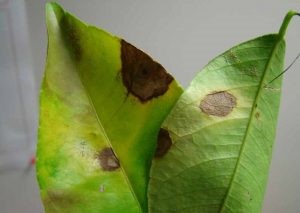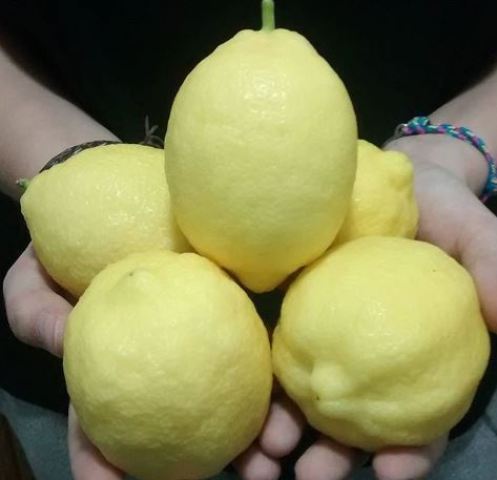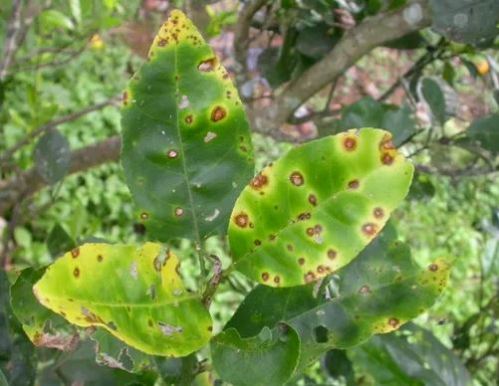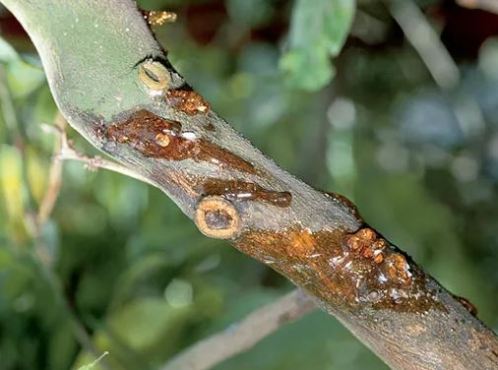Lemon tree diseases: yellow leaves, brown spots…

Hello to all agrohuerters! In today’s article we are going to learn a little more about lemon tree diseases. To do this, we will focus on observing what are the main symptoms that we can observe in the trees and, once these symptoms have been identified, find out who is to blame.
In this way, the goal will be to have lemons as healthy as the ones I show you in this photo:

1. Lemon tree diseases: leaves and fruits
Most of the lemon tree diseases that we are going to show you in the article are caused by fungi. However, there are other very important diseases transmitted by some insects such as aphids (especially viral diseases) that can cause serious damage to our lemons. We will show you the damage that insects or other arthropods can cause in fruit trees in future articles.
Yellow sheets
Sometimes if we look closely, the leaves of our tree have yellow spots. These yellow spots can be larger or smaller. For example, we can often see small yellow spots that evolve into darker spots. Normally every time a stain evolves in this way it is a fungus. In this case it could be Cercosporiosis, as shown in the following photo.

In addition to the yellow leaves, sometimes we can see leaves of a darker color, almost black. In this case, the disease is known as Anthracnose and can be caused by a fungus called Colletotrichum limetticolum.
wrinkled sheets
Sometimes, we can see that our trees have wrinkled leaves. These symptoms can be due to various reasons, among which are: fungal infections, viruses, bacteria, leaf miners (generally caterpillars) or lack of nutrients. In order to identify what is the cause in each case, we must examine how these symptoms evolve.
Lemons with brown spots
If one day you look at your lemon tree and see that they have brown spots on their skin, it could be due to several things. One of the main causes can be a fungus called Alternaria. Around 20% of agricultural losses are caused by this fungus. It is advisable to avoid lesions on the skin of lemons since these wounds are ideal for fungi to enter.
There may also be other types of discoloration caused by an insect or mite such as Tetranychus urticae.
2. Problems in the bark of the lemon tree
The bark of the trunk and the branches of the tree can suffer from various diseases caused by viruses and bacteria mainly. Among the most common symptoms is the appearance of a kind of gum or resin, the detachment of the bark, the drying of the branches, etc.
Gummy bark: sticky lemon branch
On some occasions we can observe a kind of gum or resin in the bark of the lemon tree, especially at the base of the trunk. This may be because the roots of the tree are rotting due to a fungus called Phytophthora. This disease can also affect the branches of the tree as we can see in the following image:

damaged bark
Other lemon tree diseases can be caused by viruses. In this case we can see how the bark of the tree begins to dismember. This type of disease can be known as «sadness», they cause a reduction in production and sometimes the death of the tree. To treat diseases related to viruses and above all to avoid them, it is recommended to use healthy material.
As in the previous case, the branches can also be affected.
3. How to combat lemon tree diseases
Once we know what the main lemon tree diseases are, we must learn to combat them. However, as you know, prevention is much more important than cure. Here is a list of some tips that will help us prevent these types of diseases from appearing on our trees:
- Choose resistant varieties
- Avoid planting the tree on very hard ground
- Try not to cause injuries with the machinery
- Avoid excess water at the base of the trunk
- Drip irrigation works better than the sprinkler as it prevents excess moisture near the trunk
- Delete the affected parts
- Disinfect the material and machinery before carrying out any treatment
References
- Gardner JM, Kono Y, Chandler JL (1986).Bioassay and host-selectivity of Alternaria citri toxins affecting rough lemon and mandarins. Physiological and Molecular Plant Pathology, 29(3), 293-304.
- Patriarca, A., Fernandez, V. (2018). would alternate. Food Science, Elsevier.
- Dubey, K., Sharma, R.M. (2016).Effect of rootstocks on tree growth, yield, quality and leaf mineral composition of lemon (Citrus limon (L.) Burm.) Scientia Horticulturae, 200, 131-136.
This is all for today, soon you will have more articles about pests and diseases in fruit trees. I hope it helps you and do not hesitate to ask your questions in the comments.
Have a nice day!

![Photo of Daisies Care: [Soil, Humidity, Pruning and Problems]](https://www.complete-gardening.com/wp-content/uploads/2022/08/daisies-care-soil-humidity-pruning-and-problems-390x220.jpg)
![Photo of Bougainvillea Pests and Diseases: [Detection, Causes and Solutions]](https://www.complete-gardening.com/wp-content/uploads/2021/06/buganvilla_1603484450-390x220.jpg)

![Photo of Oregano Cuttings: [Grafts, Time, Rooting and Planting]](https://www.complete-gardening.com/wp-content/uploads/2022/08/oregano-cuttings-grafts-time-rooting-and-planting-390x220.jpg)